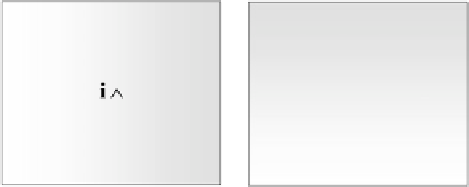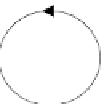Graphics Reference
In-Depth Information
Fig. 6.2
An anticlockwise
and clockwise bivector
means that the geometric product of two vectors
a
and
b
creates a scalar, inner
product of 9, and an outer product of 12 on the
i
-
j
plane. For example, given
a
=
3
i
b
=
3
i
+
4
j
ab
=
(
3
i
)
·
(
3
i
+
4
j
)
+
(
3
i
)
∧
(
3
i
+
4
j
)
=
9
+
9
i
∧
i
+
12
i
∧
j
=
+
∧
9
12
i
j
.
The 9 represents
|
a
||
b
|
cos
β
, whereas the 12 represents an area
|
a
||
b
|
sin
β
on the
i
-
j
plane. The angle between the two vectors
β
is given by
cos
−
1
(
3
/
5
).
However, reversing the product, we obtain
=
β
ba
=
(
3
i
+
4
j
)
·
(
3
i
)
+
(
3
i
+
4
j
)
∧
(
3
i
)
=
9
+
9
i
∧
i
+
12
j
∧
i
j
where the sign of the outer (wedge) product has flipped to reflect the new orientation
of the vectors relative to the accepted orientation of the basis bivector.
So the geometric product combines the scalar and wedge products into a single
product, where the scalar product is the symmetric component and the wedge prod-
uct is the antisymmetric component. Now let's see how these products behave in
3D.
=
9
−
12
i
∧
6.7 The Geometric Product in 3D
Before we begin let's introduce some new notation to simplify future algebraic ex-
pressions. Rather than use
i
,
j
and
k
to represent the unit basis vectors let's employ
e
1
,
e
2
and
e
3
respectively. This implies that (
6.7
) can be written
ab
e
2
.
We also remind ourselves that we are working with a right-handed axial system,
where, using our right-hand, the thumb aligns with
e
1
,the
x
-axis, the first finger
=|
a
||
b
|
cos
β
+|
a
||
b
|
sin
β
e
1
∧



















